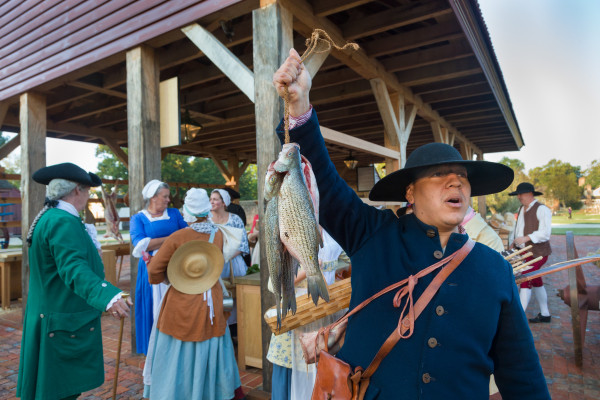 At 10 a.m. the bell rings three times and the market is open. In the 18th century, the clerk in charge of the market would likely have pulled the cord fastened to the chamber on the roof, but today a staff member does the honors. (Of course, if a guest is nearby at the right time and place… well, you never know).
At 10 a.m. the bell rings three times and the market is open. In the 18th century, the clerk in charge of the market would likely have pulled the cord fastened to the chamber on the roof, but today a staff member does the honors. (Of course, if a guest is nearby at the right time and place… well, you never know).
It replaces the outdoor sales tent on the other side of the Magazine no more than a hundred yards away. The grand opening of the just completed Market House will take place on the weekend of Nov. 20-21 (mark your calendars!), with a host of activities, some authentic 18th-century market activities, and an appreciation for Forrest Mars, Jr., whose generosity made it possible.
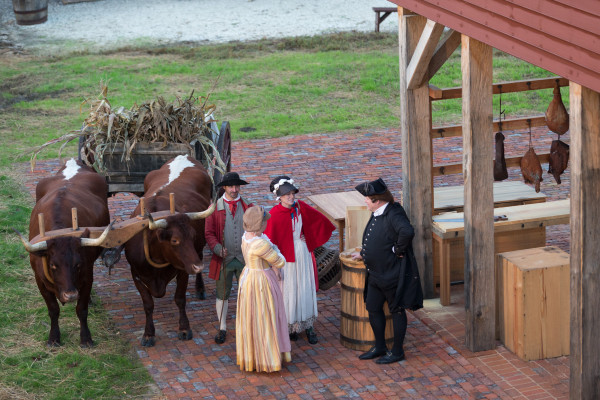 Poking around during my first visit after opening, I was struck by how simple the building seemed to be (there aren’t even walls!). But since I’ve been watching this project develop over years, I knew how complex it was.
Poking around during my first visit after opening, I was struck by how simple the building seemed to be (there aren’t even walls!). But since I’ve been watching this project develop over years, I knew how complex it was.
The market sprang to life thanks to an amazing amount of research and collaboration among Colonial Williamsburg’s historians and tradespeople.
Tradespeople from all over town pitched in. The brickmakers made more than 5,000 bricks for the area. Carpenters framed the building; blacksmiths produced the iron work and hooks; joiners made the tables and cabinets. Tinsmiths provided the lanterns hanging from the rafters; basketmakers and coopers made containers for the merchandise. I’m sure there are others I’ve overlooked, including all the people behind the scenes who made the plans, got the permits, ran the wires, and other 21st-century details.
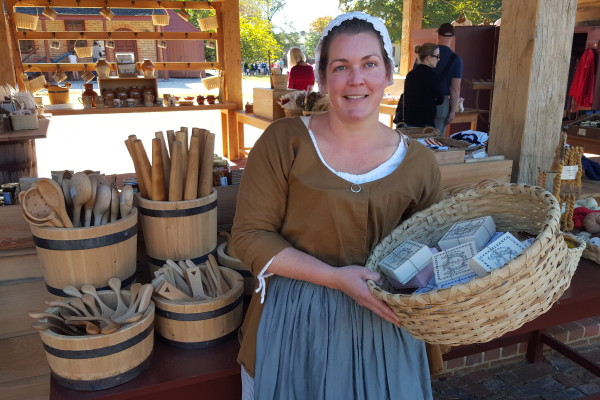 Historians have known about the market for decades, but the actual evidence is so fragmentary that it required extensive research to determine the likely architecture of the structure, its dimensions, and its usage. It starts with what seems almost like an offhand reference from the Virginia Gazette in April 1757:
Historians have known about the market for decades, but the actual evidence is so fragmentary that it required extensive research to determine the likely architecture of the structure, its dimensions, and its usage. It starts with what seems almost like an offhand reference from the Virginia Gazette in April 1757:
The Gentlemen appointed by the Common Hall of the city… will meet on Tuesday next at the House of Mr. Henry Wetherburn, at Six o’Clock, in the Evening, in order to agree with a Carpenter for building a Market-House in the said City.
Other mentions—a tax to help pay for rebuilding it in 1764, a 1781 survey, unlabeled buildings on the Frenchman’s map—did little to clear up the mystery. But Colonial Williamsburg’s architectural historians studied comparable structures in the United States and England and found enough evidence to confidently design a market house. A team of archaeologists followed up with a field study that established the existence of the brick plaza.
The Market House blog that chronicled the reconstruction is a must read for anyone interested in the details of the project.
I found a wide variety of items for sale at the new market. There’s more space here than in the tent next door, so there’s more to see. But there are also nods to its use in the 18th century. In keeping with its historic role as a food market, you can purchase fresh seasonal fruits and vegetables or even a whole Smithfield ham (hanging high on hooks from beams).
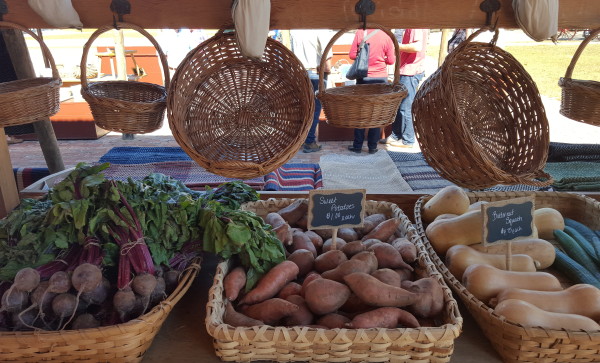 Along with the fresh fruit, Chowning’s rolls are one of the most popular items at the market. I’m tempted by the bunches of peppers. Sure, you could use them to decorate, but I would just as soon snack on them.
Along with the fresh fruit, Chowning’s rolls are one of the most popular items at the market. I’m tempted by the bunches of peppers. Sure, you could use them to decorate, but I would just as soon snack on them.
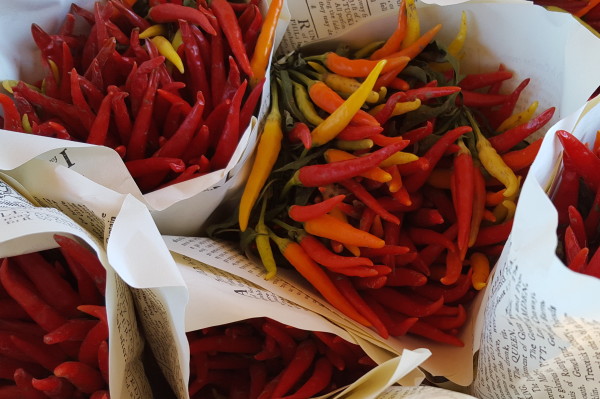 Williamsburg seeds are also part of the mix: try your hand at growing some Old Dutch half runner beans or yellow crookneck squash. At the moment yarn from the historic Leicester Longwool sheep is available in several colors.
Williamsburg seeds are also part of the mix: try your hand at growing some Old Dutch half runner beans or yellow crookneck squash. At the moment yarn from the historic Leicester Longwool sheep is available in several colors.
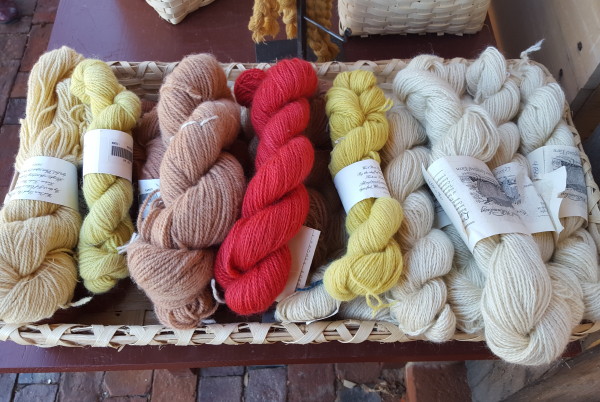 There’s plenty of room to outfit your young lad or lass in a colonial costume for the day. (Adults have to head across the way to the Mary Dickinson Shop.)
There’s plenty of room to outfit your young lad or lass in a colonial costume for the day. (Adults have to head across the way to the Mary Dickinson Shop.)
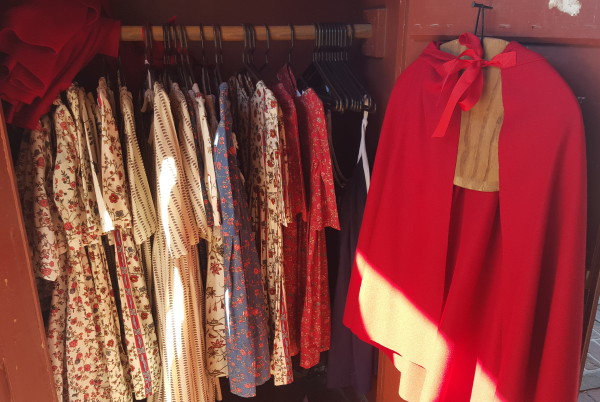 The market house reminds me of the one in Charleston’s City Market, where sandwiches are sold alongside t-shirts. It’s a contemporary blend of trend and tradition: a historic building where guests can pick up what they need for the house or chat with friends, but still feel like they’ve settled into a different time.
The market house reminds me of the one in Charleston’s City Market, where sandwiches are sold alongside t-shirts. It’s a contemporary blend of trend and tradition: a historic building where guests can pick up what they need for the house or chat with friends, but still feel like they’ve settled into a different time.
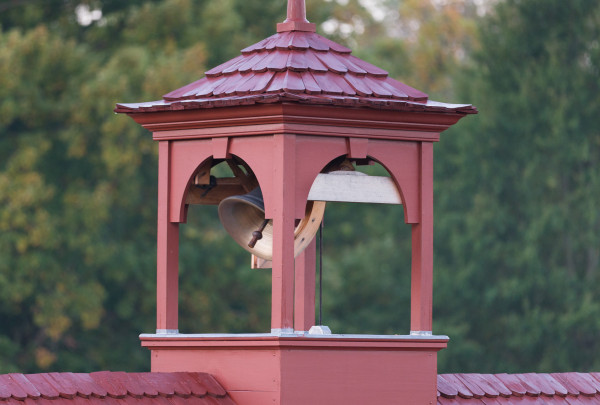 In the 18th century, market hours were a bit different. The market would have opened not long after daybreak and would probably have closed by early afternoon. At the moment the closing bell rings at 9 p.m., although hours will vary by season and weather forecasts. Lightning, heavy rain, or bitter cold will keep the market closed. “We’ve all become meteorologists,” says assistant manager Stephanie Ruppert.
In the 18th century, market hours were a bit different. The market would have opened not long after daybreak and would probably have closed by early afternoon. At the moment the closing bell rings at 9 p.m., although hours will vary by season and weather forecasts. Lightning, heavy rain, or bitter cold will keep the market closed. “We’ve all become meteorologists,” says assistant manager Stephanie Ruppert.
We’d love to see you in Williamsburg for the grand opening in a few weeks. Bet even if you can’t make it, check out the bustle of activity on the Market House webcam.
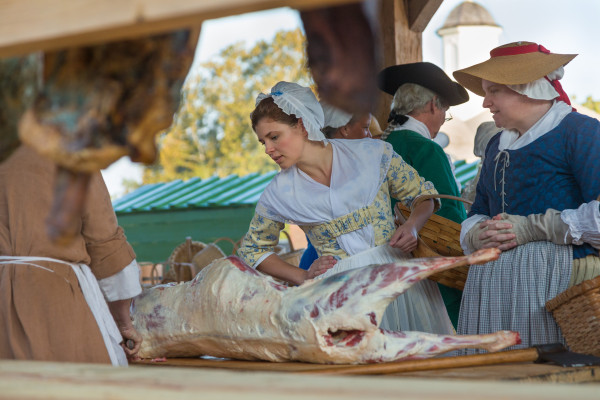
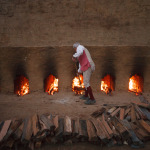
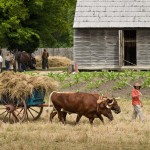
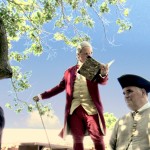
Has the old sales tent been taken down? Or is it going to be used in another way? Can’t wait to shop over Christmas.
As I understand it, the old tent will come down sometime in the next month. The tarp is apparently in very rough shape, with staff having to make regular repairs. But tradespeople have laid claim to some of the supports, so everything salvageable will find a new use.
Enjoyed visiting the market with you, Bill. The roll was very tasty.